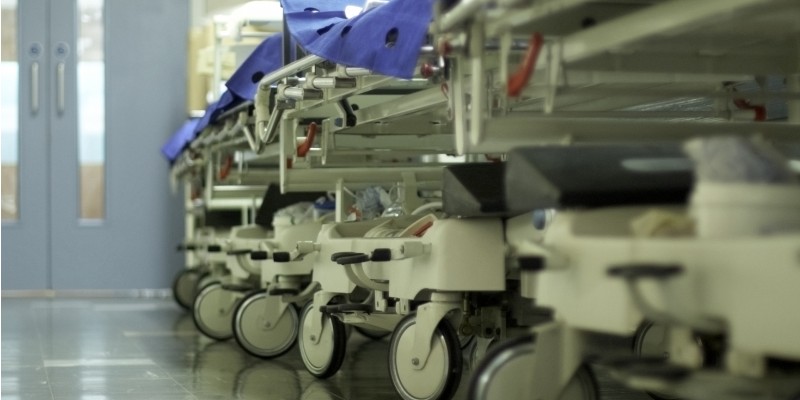
The First Minister, John Swinney MSP, was challenged during First Minister’s Questions on the experiences of Scotland’s nursing staff shared through our UK wide Corridor Care report.
The first-hand stories of over 5,000 nursing staff, including almost 500 from Scotland, highlighted a devastating collapse in care standards, with patients routinely coming to harm across the UK.
Demoralised nursing staff working in Scotland reported caring for multiple patients in a single corridor, unable to access oxygen, cardiac monitors, suction and other lifesaving equipment. They have witnessed patients going into cardiac arrest while in a corridor, report patients being left with no access to bathroom facilities or buzzers and having to deliver personal care to incontinent patients with no privacy.
Nine in ten of those surveyed say patient safety is being compromised.
One Scottish nurse commented: “Department with capacity for 13 beds, we had 40 in, with patients on chairs having treatments administered, also sitting in the waiting room on cardiac monitors, using privacy screens to put around patients to use the bedpan.”
The use of continuous flow models means that these issues are being experienced far beyond emergency departments. Overcrowding is taking place across wards with extra beds being added to bays and nursing staff doing their best to care for patients in bathrooms, offices, cupboards and bereavement rooms.
One nurse, said: “This elderly patient who was bed bound was doubly incontinent and needed a space in private to be cleaned, our only option was the charge nurse’s office.”
Another said: “A very confused patient was brought to the corridor. This patient wandered the corridors and was found in different areas of the ward multiple times. A bed was eventually found in a temporary area which was an office usually used for out-patients appointments, it still had the computer desk set up and had no window or toilet.”
A nursing support worker said: “My last shift, I went into a full ward and 34 patients referred to come into the ward, 10 of which were in the corridor already waiting. One of the patients had a stroke, another with an increased oxygen requirement and several with the flu. Extremely unsafe as patients kept on arriving with nowhere to move our already admitted patients to.”
Staffing levels are not being increased to cover these additional patients and the testimony also reveals serious concerns about infection prevention and control with patients crammed into tight spaces next to one another.
One nurse said: “Flu positive patients being transferred to wards before rooms become available. Patients with flu then being cared for in ward corridors next to other vulnerable patients.”
Responding to the testimony which was read out by opposition leaders during First Minister’s Questions, John Swinny apologised to staff and patients but failed to outline a plan to address the ongoing pressures on the health and care system.
Colin Poolman, Director, RCN Scotland added:
“Our report makes for distressing reading and must be a wakeup call for Scottish government.
“The impact goes far beyond the doors of emergency departments, with nursing staff across many acute settings desperately struggling as they are forced to create space in clinical areas for additional unstaffed beds or provide patient care in corridors and other inappropriate locations.
“This is completely unacceptable for patient safety and staff wellbeing. No patient should ever have to suffer the risk or indignity of being cared for in such a way – yet it has been allowed to become normal practice. The Scottish government must commit to publishing the data on exactly how many patients are being cared for in these circumstances. The public deserves to know what is happening to patient safety.
“They must also commit to long term action and investment focused on addressing the nursing workforce shortages and building sustainable capacity both within in the NHS and most importantly within community and social care.”





